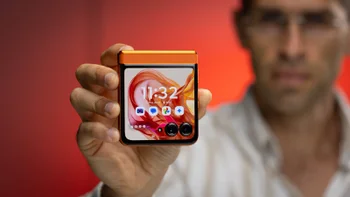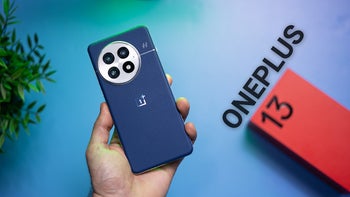Nexus 5 performance review: the tale of benchmarks

The Nexus 5 has arrived and it is a powerhouse of a phone that you can buy for nearly half the price of other top-shelf models. Just how powerful is it, though? It’s time to push its limits with benchmarks and see whether it can hold its own against rivals.
The Nexus 5 is powered by the latest Qualcomm Snapdragon 800 system chip with Adreno 330 graphics. This is the same chip used in all latest top of the line devices like the Samsung Galaxy Note 3, Sony Xperia Z1 and the LG G2. Even though the performance of these devices differs slightly (the different amount of RAM and other factors matter), keep in mind that all of them should be on about the same level. Then, there is the new iPhone 5s with Apple’s A7 system chip and the move to 64-bit. We’ll take a look at how all these different architectures compare.
1.1. Nexus 5 scores into top 3 on Sunspider
1.2. Kraken is not a test for cheaters
2. GPU: Play on
2.1. Basemark: Trailing close behind
2.2. GFXBench: the iPhone is the limit
3. Conclusion: best value for the money
*Disclaimer: Almost all manufacturers (except for Apple and Google Nexus devices!) cheat certain benchmarks by forcing CPU and GPU clock speeds to their peak capacity. This is an unusual behaviour for the otherwise varying clock speeds of the CPU and GPU and does not reflect the actual behaviour of a smartphone. This unusual behaviour happens after the handset detects it’s running a specific benchmark applications. The Samsung Galaxy Note 3 is particularly guilty having the largest list of apps it cheats, but others like the Samsung Galaxy S4, HTC One and LG G2 are also cheating in some apps.
1. CPU Explained

In the case of the Nexus 5, the Snapdragon 800 system chip works alongside 2GB of 32-bit dual-channel 800MHz LP-DDR3 RAM, the same as on the LG G2.
1.1. Nexus 5 scores into top 3: Sunspider
The first test we run to see how the Nexus 5 fares against its rivals is the Sunspider Javascript Benchmark that measures on-browser javascript performance. The Nexus 5 scores into the top 3, an achievement that is quite remarkable given that it is actually more affordable than other phones and still outperforms them.
Keep in mind that Sunspider is the target of specific optimizations by various chip makers (definitely Qualcomm), so Snapdragon devices are unsurprisingly among the best ones here.
Mozilla Kraken is another stressful javascript benchmark. The Nexus 5 slips to the fifth place here, trailing closely behind its LG G2 Snapdragon 800 forefather. One notable thing is that unlike the widely popular Sunspider, Kraken is not the subject of optimizations by chip and phone makers.
2. GPU: Play on
The Nexus 5 features the Adreno 330 graphical chip running at clock speeds of up to 450MHz. This is the exact same peak frequency of the Adreno 320 (coming packed into the Snapragon 600 chip), but with optimizations and more resources, the Adreno 330 emerges as a clear winner over its predecessor. In the near future, we expect to see the very same Adreno 330 pushed to 550MHz in the MSM8974AB chip and some manufacturers like Chinese Xiaomi have already confirmed working on devices with this improved GPU. No other major phone maker has officially announced plans for such a device so far, though. The benchmark tests below show just how much of a difference it makes.
2.1. Basemark: Trailing close behind
The first benchmark we’ll look at to measure graphics performance is Basemark X 1.0. It runs game simulations on-screen and at 1080p off-screen. The Nexus 5 has a 1080p display, but since the on-screen buttons take up some of the space, the actual on-screen resolution is in effect slightly smaller so the device pushes less megapixels in the test and it’s on screen results are slightly higher.
For some devices like the iPhone 5s, though, the difference between on-screen and off-screen results is staggering because of the huge difference between the comparatively low resolution of its 4-inch display and the high resolution for offscreen tests.
Looking at the actual results, you’d see that the iPhone 5s leads but the Galaxy Note 3 is a close runner-up. Taking into account that the Note 3 has been proved to cheat this particular benchmark, we would say the Nexus 5 scores brilliantly here - on par with the Xperia Z1 and even outperforming its LG G2 forefather.
It’s also worth mentioning that this is a very stressful graphics test and we expect it to be at least a year until 1080p devices start hitting the coveted 30fps smooth framerate mark here.
The first benchmark we’ll look at to measure graphics performance is Basemark X 1.0. It runs game simulations on-screen and at 1080p off-screen. The Nexus 5 has a 1080p display, but since the on-screen buttons take up some of the space, the actual on-screen resolution is in effect slightly smaller so the device pushes less megapixels in the test and it’s on screen results are slightly higher.
For some devices like the iPhone 5s, though, the difference between on-screen and off-screen results is staggering because of the huge difference between the comparatively low resolution of its 4-inch display and the high resolution for offscreen tests.
Looking at the actual results, you’d see that the iPhone 5s leads but the Galaxy Note 3 is a close runner-up. Taking into account that the Note 3 has been proved to cheat this particular benchmark, we would say the Nexus 5 scores brilliantly here - on par with the Xperia Z1 and even outperforming its LG G2 forefather.
GFXBench, formerly known as GL Benchmark, is one of the most GPU-intensive tests out there and it gives a detailed breakdown of a video card’s performance. Fill rates (the number of pixels a video card renders and writes to video memory) are the first thing we evaluate and you’d see that Apple is the clear leader, smoking all other devices.
We recommend you take a look at our detailed iPhone 5s performance review where we explain the amazing PowerVR G6430 graphics chip that powers Apple’s latest flagship.
The final two tests are another stressful game simulation - T-Rex. The Galaxy Note 3 pulls ahead here, and - interestingly - without any cheating. The device almost crushes the 30fps threshold. The Nexus 5 has the same Adreno 330 graphics chip, but scores a slightly lower 23 fps.
All in all, the Nexus 5 performs admirably. A $350 device, it is perfectly on par with much more expensive top-shelf Android phones when it comes to performance. It is clear that Google is subsidizing this handset hugely and just looking at the charts above you should not have any doubt this is the best value for the money device currently on the market.
The Nexus lineup first arrived with the idea to showcase the best of the Android platform, and more recently - the best of Android at an extremely affordable price. The Nexus 5 is no exception to that rule when it comes to its computing power.

Follow us on Google News













Things that are NOT allowed:
To help keep our community safe and free from spam, we apply temporary limits to newly created accounts: